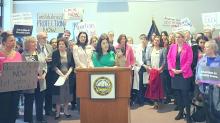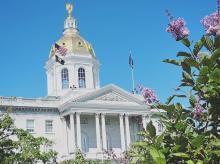During the first century of the newly formed United States, there was no such thing as a “ban” on abortion. Then in 1847, physicians came together and created the American Medical Association (AMA), which became the (male-dominated) authority on all things medical. Included in that oversight were nurses and midwives, the practice of obstetrics.
By 1880, abortion was restricted in all states, except to save the life of the mother. By 1910, abortion had become illegal in every state, except if a doctor deemed it necessary. To be clear, at that time 95% of physicians were men. Now, with the criminalizing of safe abortions, the procedure became secretive and unsafe. In 1930, nearly 2,700 women lost their lives to illegal and unsafe abortions.
In 1955, physicians who attended a national conference on abortion legalization called for reform on abortion laws. Those who attended felt the laws needed to be readdressed, permitting physicians more leeway in providing abortion services. They noted public health would improve along with easier access to reproductive health care for women of all economic conditions.
During the 1950’s into the early 1960’s, a drug called “Thalidomide” was given to an estimated several hundred pregnant women to help ease negative symptoms of early pregnancy. Unfortunately, it caused terrible birth defects which brought about even stronger support for reforming abortion laws.
Alaska, Hawaii, New York and Washington repealed their bans on abortion during the years 1967 through 1973. During that time, thirteen other states enacted laws now permitting abortion in the cases of abnormalities in the fetus, incest, rape or a danger to the patients mental or physical health.
During that time, in 1969, the National Association for the Repeal of Abortion Laws (NARAL) was the first national group whose specific function was to work towards the legalization of safe abortion.
In 1973, by a vote of 7-2, Roe v. Wade was ruled by the United States Supreme Court that the process clause of the 14th Amendment to the Constitution protects a woman’s right to abortion. For the first time, a woman’s constitutional right to privacy was now recognized by the (at the time) all-male Supreme Court and protected in all fifty states. A safe abortion was now legally made available nationwide and it was the business of no one but the patient and her physician.
Between then and 2022 when the current Supreme Court overturned the 1973 decision, many different cases (some very dangerous to women) from several states have been brought forward and some have successfully chipped away at Roe v Wade. On June 24, 2022, voting 6-3, the Supreme Court overturned nearly fifty years of women’s rights to safe, private reproductive care.
Here in New Hampshire there is a state law from 2021 banning abortion after 24 weeks. The exception to this law is the life of the mother or a fatally defective fetus.
On Monday, Dec. 11, Rep. Amanda Toll (D-Keene) introduced a constitutional amendment to preserve abortion rights in NH’s state constitution. The amendment would read that women would have the right to abortion services before the 24th week of pregnancy. After the 24 weeks, if a physician deemed the procedure as necessary, NH could not stop it from taking place. This amendment would go to the voters in Nov. 2024.
Rep. Toll is to be commended for her work to constitutionally preserve safe abortion rights for all NH women.
As an aside, pregnancy begins with a penis and in my timeline research about the on-going struggle for this particular right for women, NOT ONCE did I come across any elected official, male or female, coming up with legislation to regulate that!
Perhaps it’s time to do so . . .







